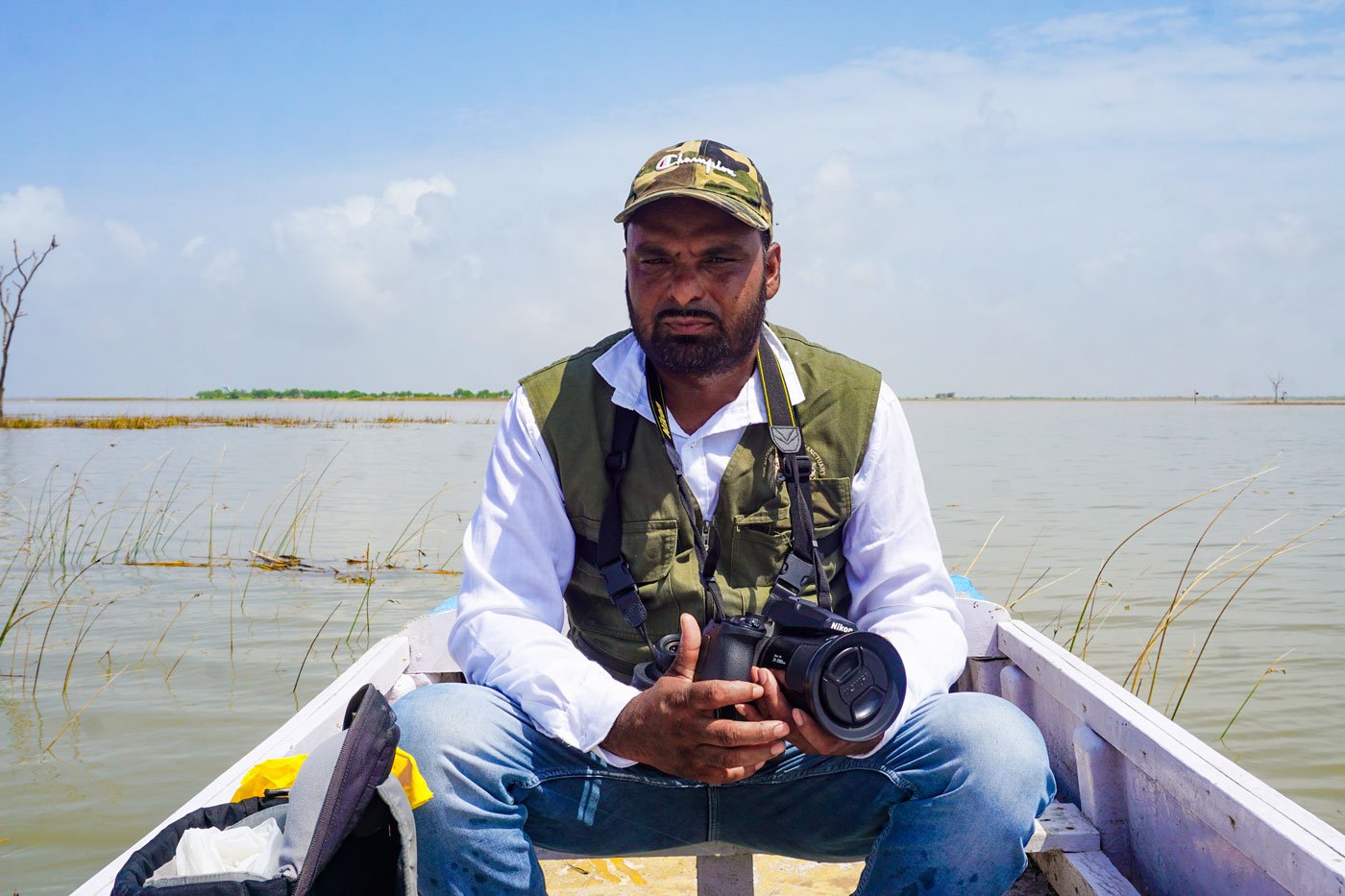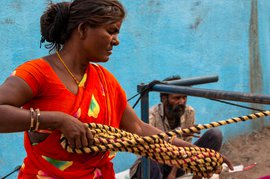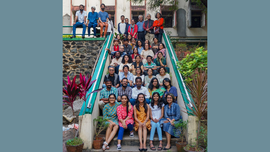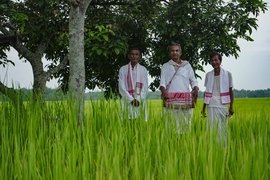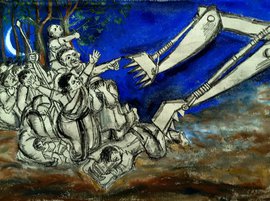Gani Sama is a 37-year-old naturalist and boatman at the Nal Sarovar lake and bird sanctuary in Gujarat. This 120 square kilometer lake in Viramgam tehsil of Ahmedabad district attracts many migratory birds coming through the Central Asian Flyway, from the Arctic Ocean to the Indian Ocean.
“I can identify more than 350 species of birds,” he says, including many of these migratory birds coming to Nal Sarovar. “Earlier, around 240 species of birds were spotted here, now the number has reached more than 315.”
Gani spent his childhood in and around the lake. “My father and my grandfather helped the forest department with the protection of these birds. They both worked as boatmen with the forest department and now I do the same,” he says. “[When] I started in 1997, sometimes I used to get work and other times I wouldn’t get anything,” he recalls.
Things changed in 2004 when the forest department hired him as a boatman for patrolling and protecting birds and, “I earn around 19,000 rupees a month now.”
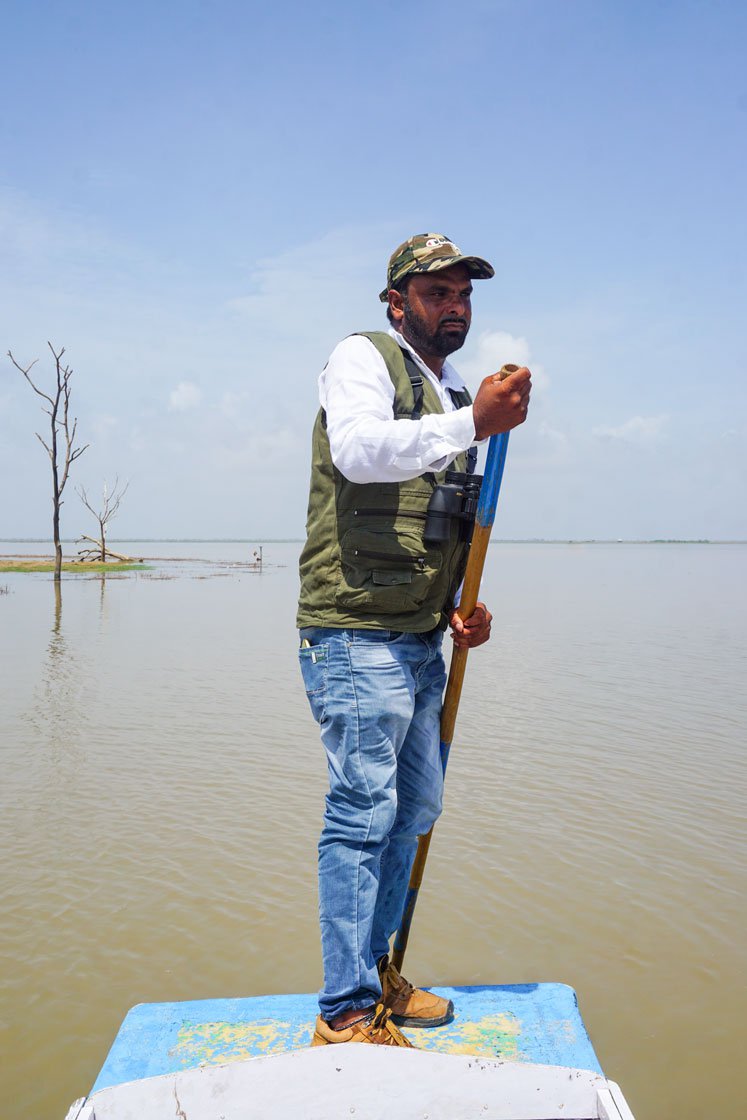
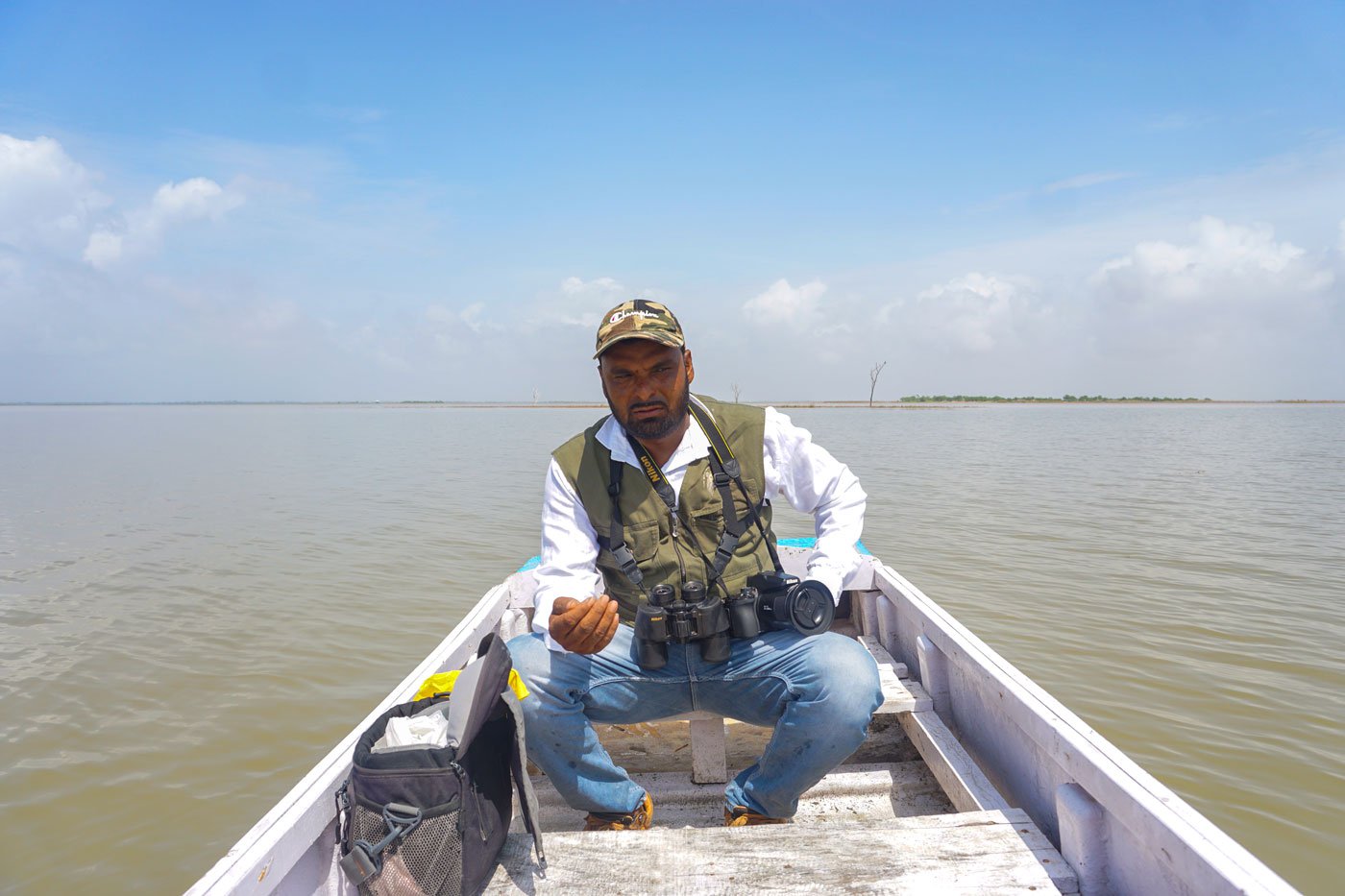
Gani on a boat with his camera equipment, looking for birds to photograph on the Nal Sarovar lake in Gujarat
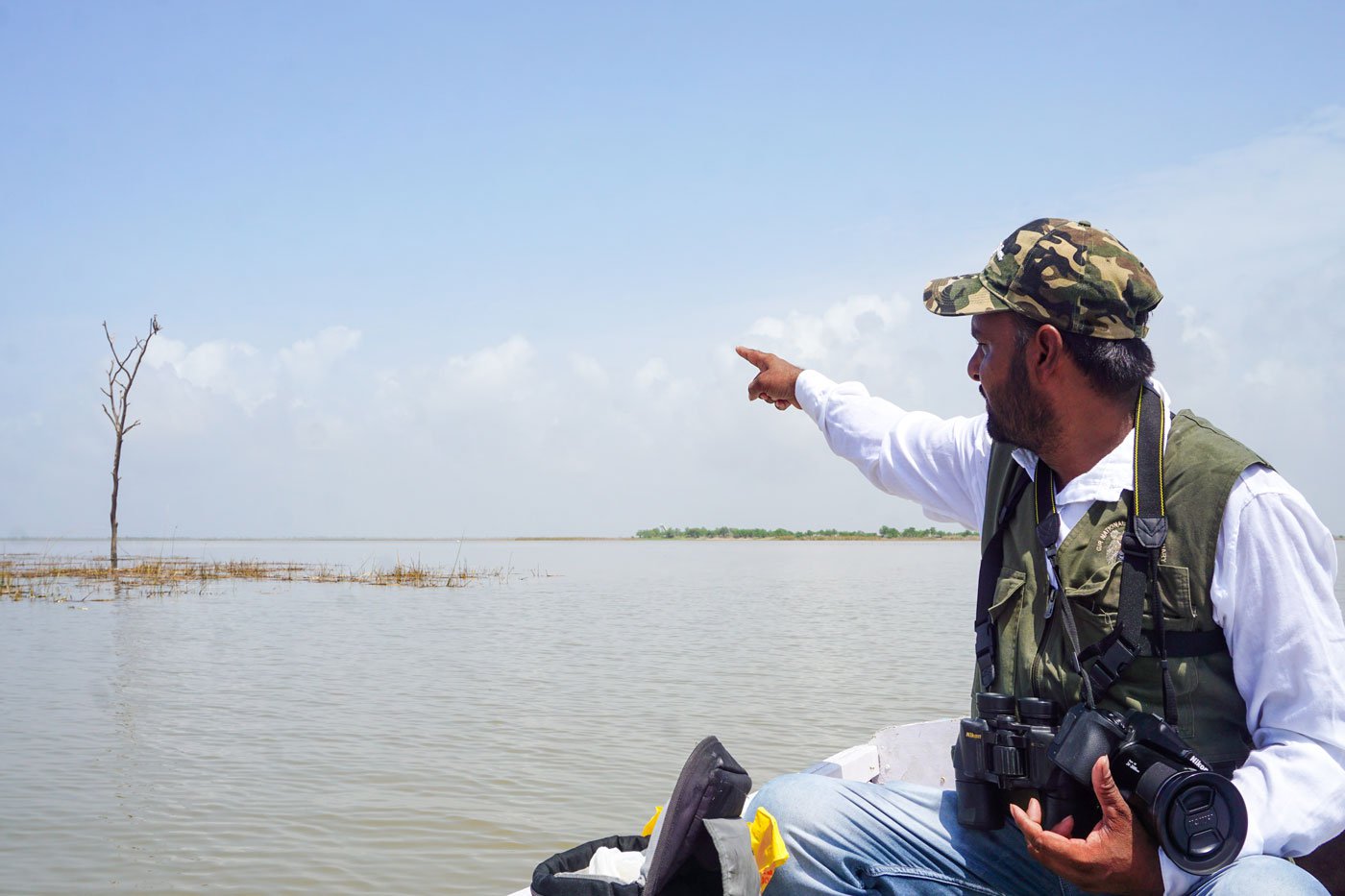
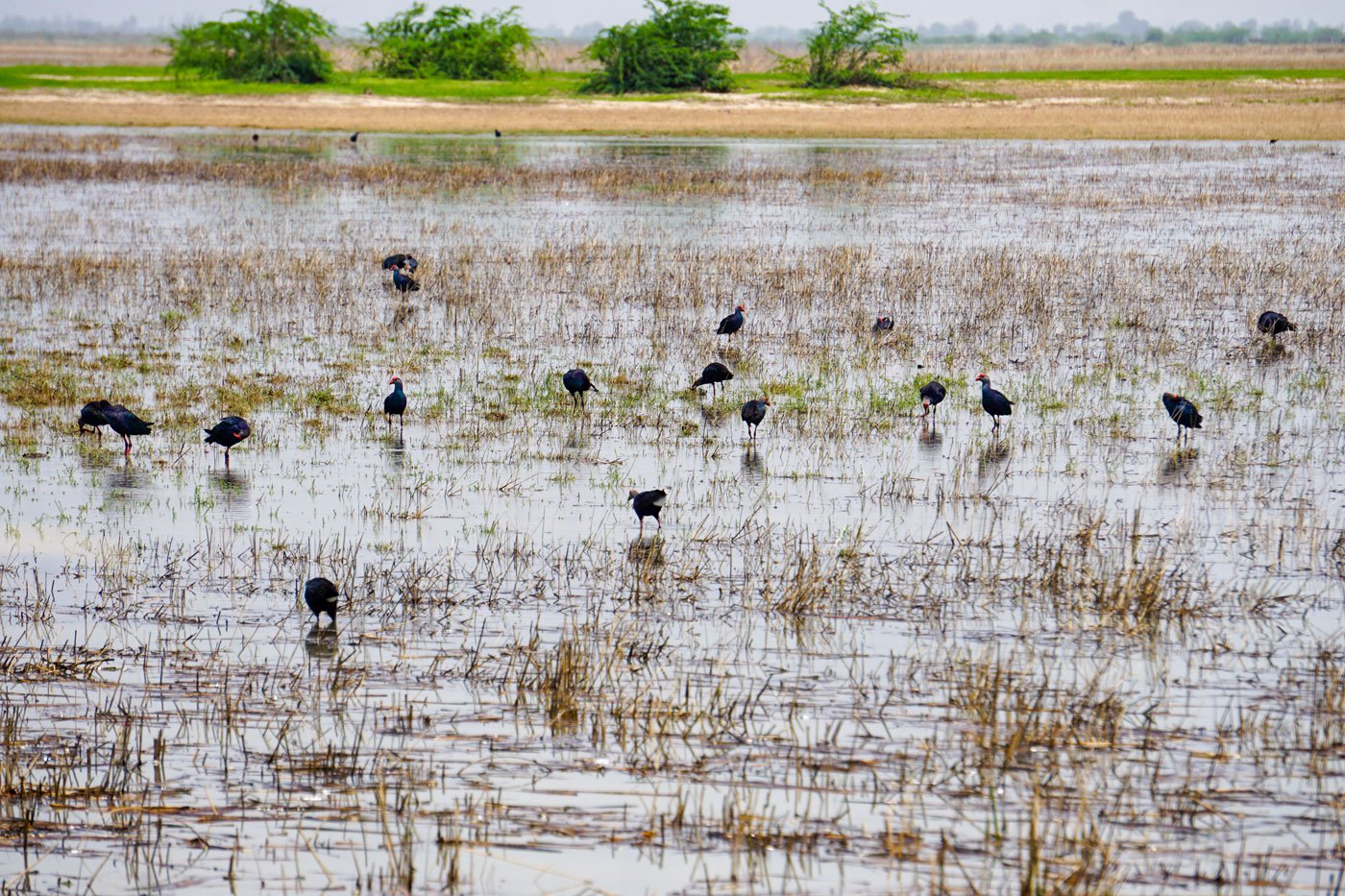
Left: Gani pointing at a bird on the water. Right: Different birds flock to this bird sanctuary
The third-generation boatman and avid birdman grew up in Vekariya village, three kilometers from Nal Sarovar. Tourism related work on this lake is the only source of income for the people of the village.
Gani studied in the government primary school in the village but dropped out of school after Class 7 as the family needed him to start earning. He has two brothers and two sisters. When he was 14, Gani started on the Nal Sarovar as a private boatman.
Despite a stop to his formal education, Gani can spot and name any bird at first glance. Not having a professional camera initially did not stop him from photographing wildlife. “When I didn’t have a camera, I used to put my phone on a viewing telescope and take pictures of birds.” He finally got a Nikon COOLPIX P950 camera and binoculars in 2023. “R.J. Prajapati [Deputy Conservator of Forests] and D.M. Solanki [Range Forest Officer] helped me purchase a camera and binoculars.”
Gani also assisted researchers and this has led to international recognition of his photos of migratory birds at Nal Sarovar. “I took pictures of two birds from the same nest in Russia, tagged as U3 and U4. In 2022, I found U3 when it came here; this year [2023], I also found U4. When these were sent to a Russian scientist through the Wildlife Federation of India, the scientist informed us that those birds had come from the same nest. Both birds visited Nal Sarovar,” he says excitedly.
He says Russian scientists noted his sightings. “I had found around eight ringed birds called Demoiselle Crane ( Grus virgo ). I took pictures of these birds which were then sent and noted.”
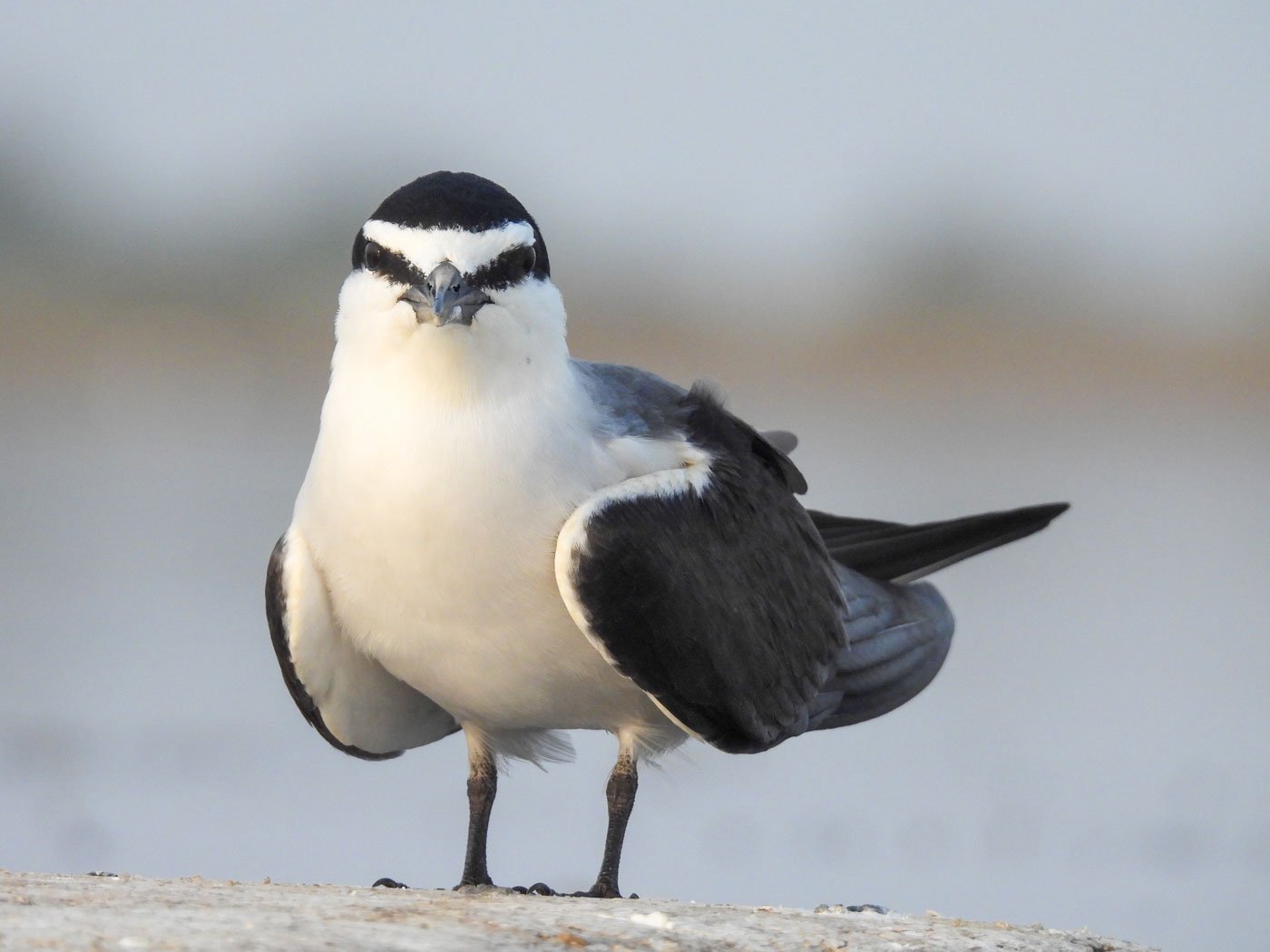
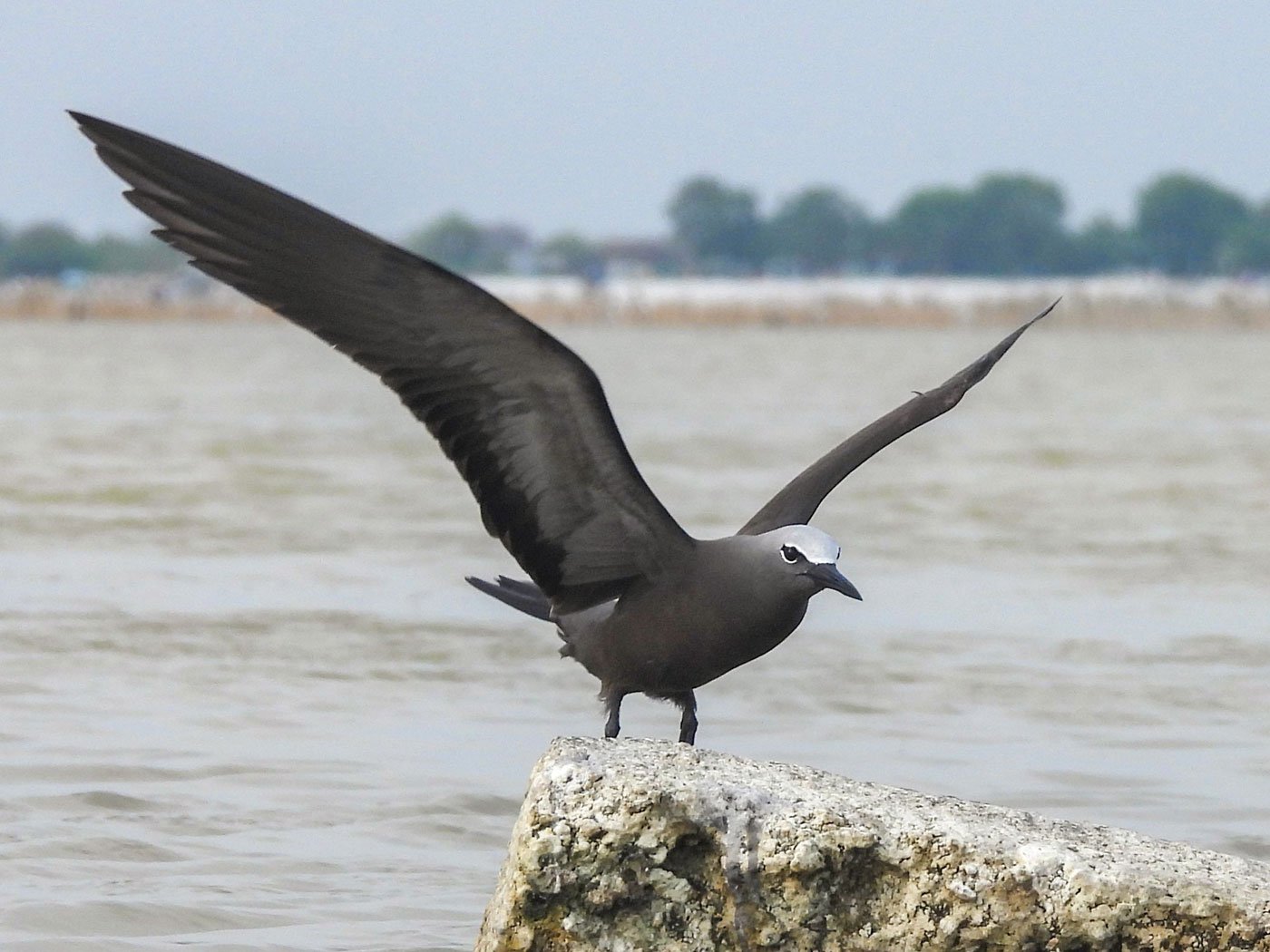
Left: A Sooty Tern seabird that came to Nal Sarovar during the Biporjoy cyclone in 2023. Right: A close-up of a Brown Noddy captured by Gani
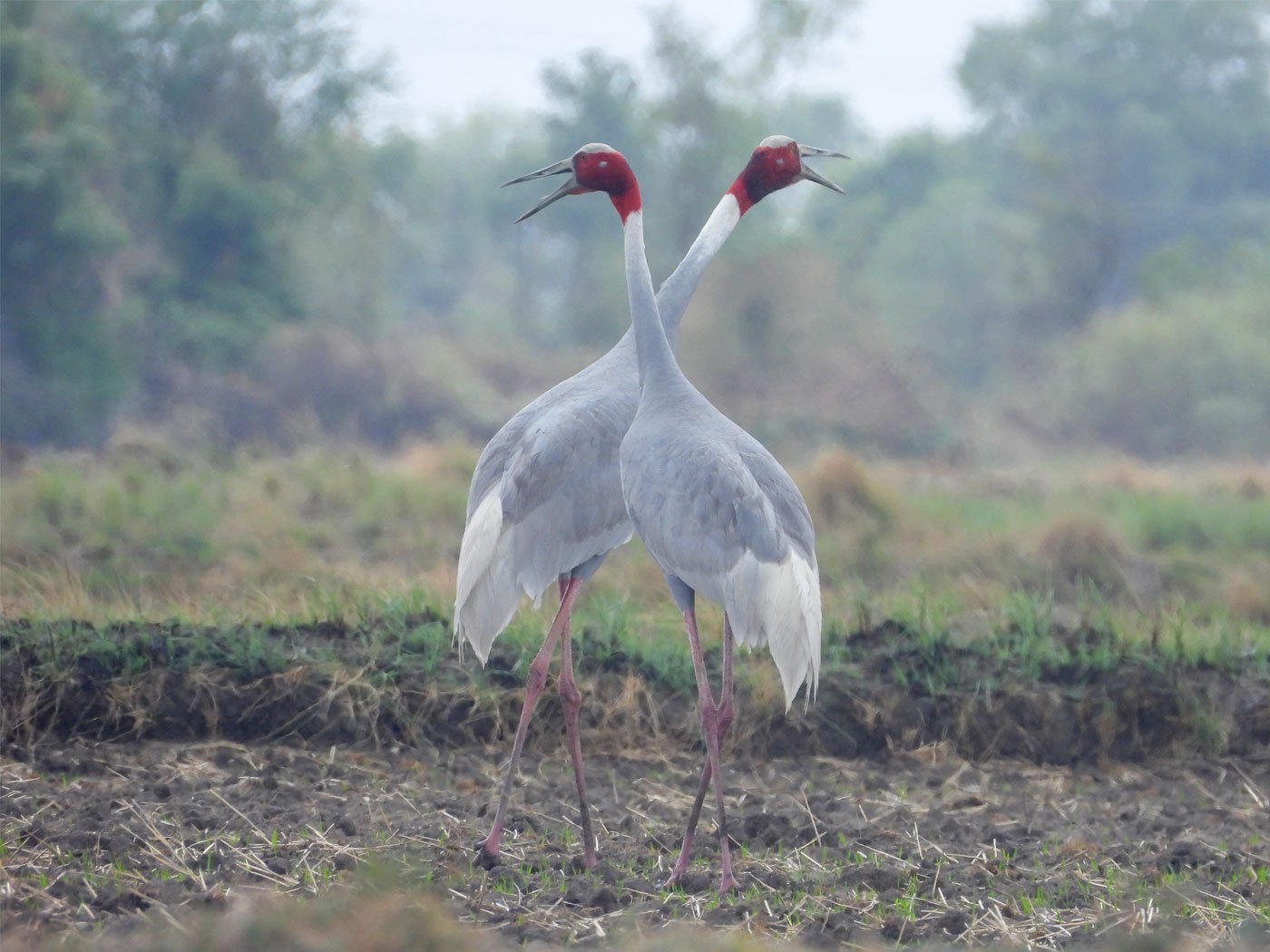
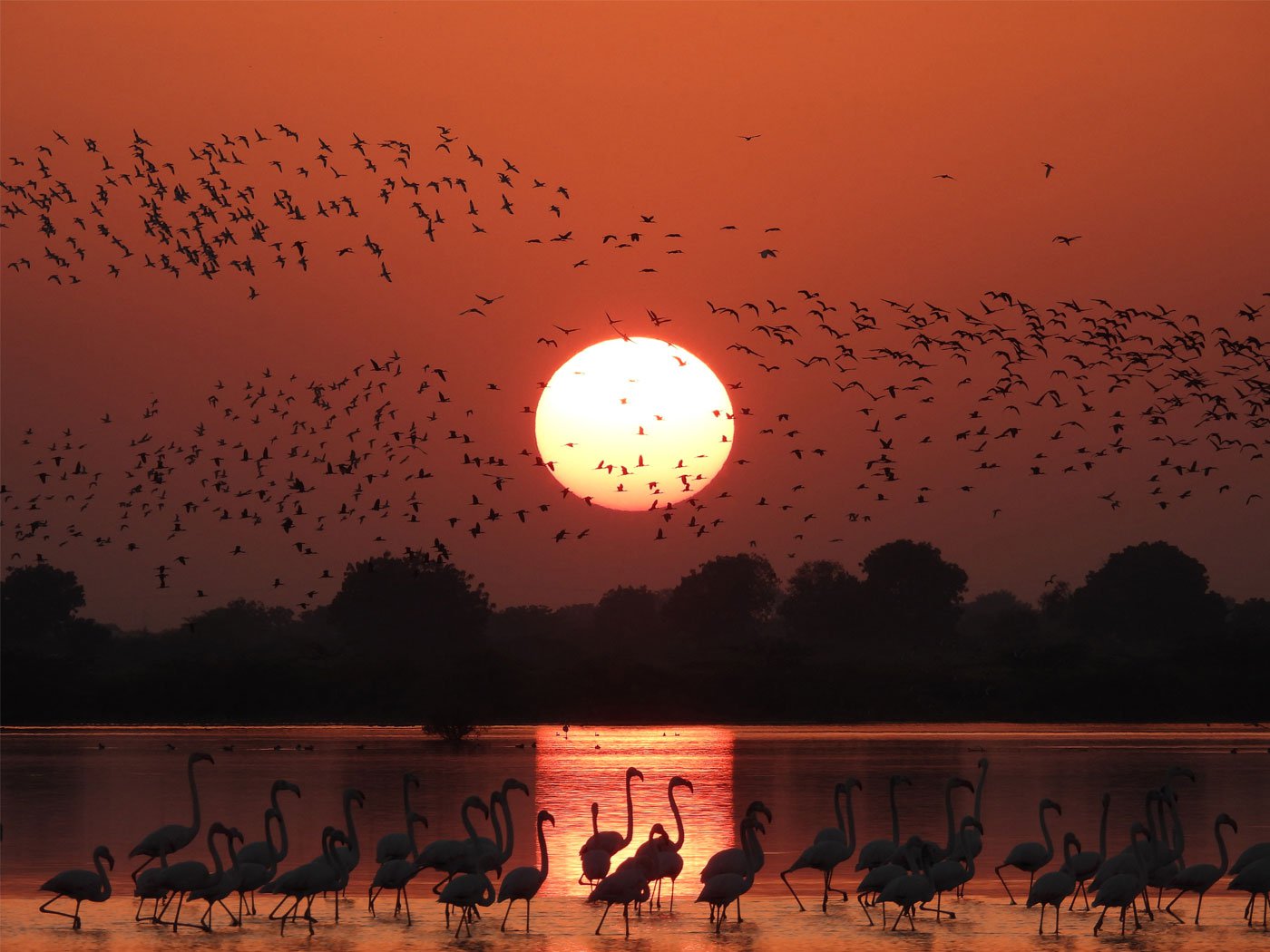
Left: A pair of Sarus cranes next to the lake. Right: Gani's picture of flamingos during sunset on the water
Gani has noticed changes taking place in Nal Sarovar due to climate change. “Because of the effects of the Biporjoy cyclone that hit Gujarat in June, there are some new species of seabirds that were sighted here for the first time, like Brown noddy ( Anous stolidus ), Sooty tern ( Onychoprion fuscatus ), Arctic Skua ( Stercorarius parasiticus ), and Bridled tern ( Onychoprion anaethetus ).”
Through the Central Asian Flyway have come the Red-breasted goose ( Branta ruficollis ) – the center of attraction at Nal Sarovar in winter. It has been coming here for the last three years. It comes from places like Mongolia and Kazakhstan. “That one bird has been coming here for the previous three years. It has been continuously coming here”, Gani points out. He mentions the critically endangered sociable lapwing ( Vanellus gregarius ) that also visits the bird sanctuary.
“One [bird] is named after me,” says Gani, speaking about a crane. “That crane is in Russia right now; it went to Russia and then returned to Gujarat and then again went back to Russia,” he recalls.
“I frequently give many pictures in newspapers. They don’t publish my name. But I’m happy to see the images there,” says Gani.